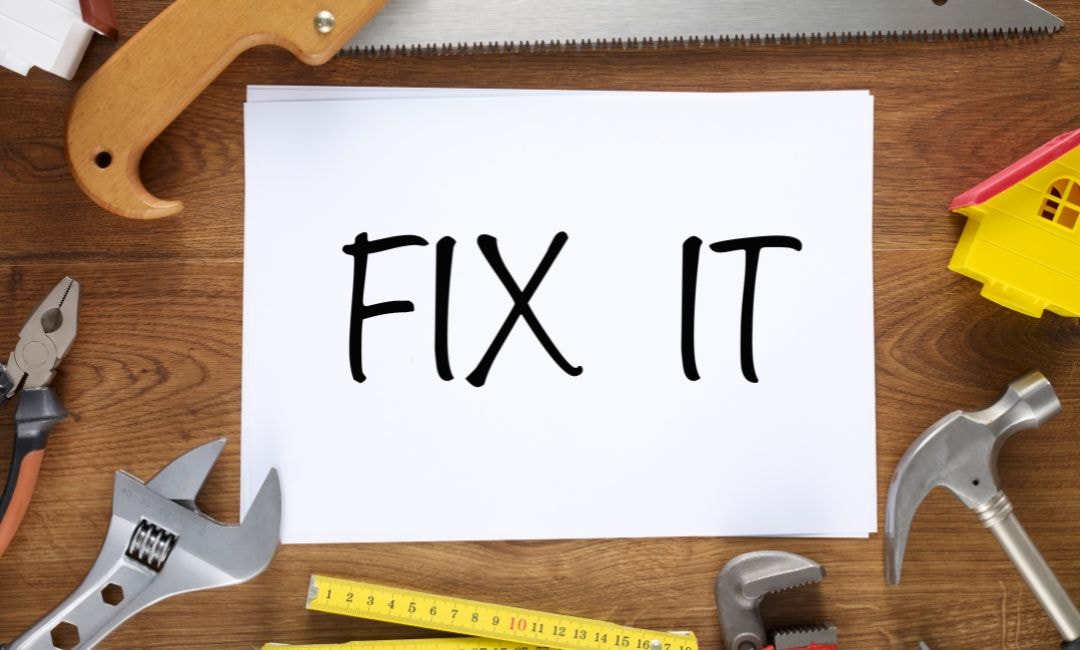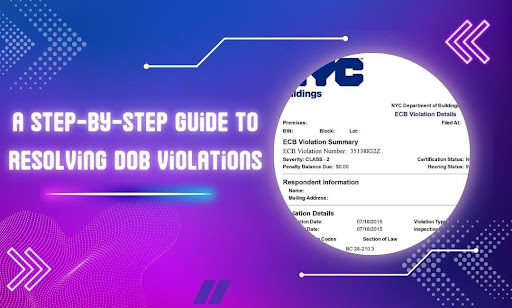The violation isn’t the worst part. It’s the ripple effect. Work stalls. Tenants get anxious. Fines grow. Inspectors don’t forget. Meanwhile, the clock keeps ticking—and so do the penalties.
Here’s the truth: most DOB violations are fixable. But they don’t fix themselves. And if you follow the wrong advice—or worse, delay the process—you pay for it. This isn’t about avoiding violations. It’s about knowing exactly what to do when one hits.
This guide gives you a straight path from confusion to compliance. No guesswork. No wasted time. Whether it’s your first violation or your fiftieth, here’s how to handle it cleanly, quickly, and with confidence.
We’ll break it down into clear steps:
- Identify the Violation: Learn what was flagged—and why it matters.
- Correct the Violation: Fix the issue based on DOB standards. No shortcuts.
- Provide Proof of Correction: Submit the right documents the right way.
- Pay Civil Penalties: Know when and how much you owe—and what delays cost you.
- Address Repeat Violations: Prevent the same issue from haunting your building again.
You’re not alone in this. We’ll walk you through each step and show you how ViolationWatch helps you catch, manage, and resolve DOB violations faster. Let’s get into it.
Step 1 — Find Out What You’re Dealing With
You can’t fix what you haven’t fully read. That might sound obvious, but it’s where most compliance efforts fall apart. Someone flags a DOB violation, and before anyone’s reviewed the actual language or classification, crews start guessing at solutions. That costs time, opens the door for bigger problems, and can leave a property owner exposed to hefty fines.
Every DOB violation includes a few critical details that shape how you handle it. Skip those, and you’re already working blind. Worse, it creates a trail of outstanding fines and incomplete paperwork that can drag down your property record.
Here’s what to look for right away:
- Violation Type — Is it an immediately hazardous Class 1? Or a less urgent Class 2 or 3? The class affects your timeline, penalties, and next steps—and in the case of elevator violations or illegal occupancy, may even trigger a criminal court summons.
- Issuing Inspector’s Notes — Inspectors often include specific observations or instructions. That text holds clues about what triggered the violation and what kind of fix they expect.
- Date of Issue and Cure Period — Some violations include a “cure by” date. That’s your grace period to correct the issue without a penalty. Miss it, and the violation escalates.
- Hearing or Reinspection Info — If you’re facing an Office of Administrative Trials and Hearings (OATH) hearing, that means documentation alone won’t cut it. You’ll need to show up—or send someone who knows the process cold.
Before you assign a licensed contractor, pull necessary permits, or submit anything, take the violation apart line by line. If you’re unsure what it’s saying, that’s your signal to bring in someone who knows the NYC Department of Buildings’ codes inside and out. Misreading a specific infraction now leads to rejections later, and the clock won’t wait for you to get it right.
Getting ahead of the resolution process now also reduces the chance of future violations tied to repeat building code infractions. Treat it like what it is—a straightforward process, as long as you start from the facts and act fast on the fix.
Step 2 — Fix What’s Actually Wrong, Not What You Assume

Guesswork doesn’t get DOB violations cleared. Corrections must meet code—their code. That means more than patching up the problem. You need to correct it according to what the DOB expects, not what looks fixed on the surface.
Here’s how to approach the correction the right way:
- Match the Fix to the Violation: Start with the exact section of code referenced in the violation. That’s your standard. The DOB won’t accept general fixes—they want proof that the condition was corrected based on what the Building Code or Zoning Resolution requires.
- Example: If you’re cited for unpermitted electrical work, fixing the wiring isn’t enough. You need a licensed electrician to bring the installation up to code and file the proper paperwork for post-approval.
- Hire Licensed Pros: Only licensed professionals can perform and sign off on regulated trades—plumbing, electrical, structural, and mechanical. If your violation touches any of these, unlicensed work will not only delay clearance, but it might earn you another fine. Make sure the professional you hire is listed in the DOB’s license registry. Double-check that their license covers the exact scope of work required for your fix.
- Pull the Right Permits: Even if the fix seems minor, you may still need a permit. Skipping this step is a fast way to turn one violation into two. Here’s where people slip:
- Doing repair work without a permit because the original job wasn’t permitted
- Assuming no permit is needed for “corrective” actions
- Relying on a contractor’s word instead of verifying with a plan examiner
Before you start any physical work, confirm whether a corrective permit is required. Submit plans, get approval, and display the permit onsite. No shortcuts. No assumptions.
- Follow DOB’s Inspection Rules: Once the fix is complete, DOB may require a follow-up inspection. This depends on the violation type and whether the cure can be proven with documents alone. If an inspection is required:
- Schedule it through the DOB NOW platform
- Make sure your jobsite is ready and accessible
- Keep a copy of all relevant plans and permits onsite for the inspector
- Keep Records Tight: Every correction should come with backup: before-and-after photos, signed completion forms, permits, and any contractor certifications. If the DOB asks for proof and you can’t produce it quickly, they’ll assume the work wasn’t done, or done wrong.
Correction isn’t about putting out a fire. It’s about sealing the issue for good, so it doesn’t show up again.
Step 3 — Show the DOB You Fixed It Right
Correcting the issue is only half the job. If the DOB doesn’t see proof, the violation stays open, and the fines keep stacking. Your documentation needs to speak the DOB’s language, follow their format, and hit every required point.
Here’s how to get that part right:
Know What the DOB Expects for Your Violation Type
Different violations require different types of proof. Some can be cleared with paperwork alone. Others need an inspection. The violation notice usually spells this out, but you need to read it closely.
For example:
- Class 1 (immediately hazardous) violations typically require both documentation and reinspection.
- Class 2 and Class 3 may only require a Certificate of Correction and supporting documents.
Don’t assume all violations follow the same process. They don’t.
Complete a Certificate of Correction (AEU2 Form)
This is your primary document for non-hearing violations. It must be filled out accurately and signed by a qualified party—either the building owner, managing agent, or a registered design professional (depending on the violation).
Common errors that get this form rejected:
- Leaving required fields blank
- Listing incorrect dates of correction
- Submitting unsigned or outdated forms
Download the current AEU2 form directly from the DOB website. Double-check every line before submitting.
Include Strong Supporting Evidence
Don’t over-explain. Let your documents do the talking.
Depending on the violation, this may include:
- Photos of before-and-after conditions (dated, labeled, and clear)
- Permit approvals and sign-offs
- Contractor certifications
- Letters of completion on official letterhead
- Inspection reports showing compliance
Submit clean, readable copies—digital if required. Sloppy files get flagged or delayed.
Submit Through the Right Channel
The DOB has different portals depending on the violation type and date issued. Submitting through the wrong system can mean your correction never gets reviewed.
Use these general rules:
- DOB NOW: For newer violations and electronic filings
- In-person or by mail: For older paper-based violations, especially those issued before DOB NOW was in effect
- eFiling system: For specific permit-related corrections
Check the instructions on your violation to confirm the right submission route.
Track Your Submission
After you send your documents, get confirmation. Save submission receipts. Follow up regularly—especially if you’re near a compliance deadline.
You don’t get credit for effort. You get credit for clearance. Until the Department of Buildings DOB updates your violation status to “RESOLVED” or “CLOSED,” your job’s not done. Timely follow-up is what moves a case from open violation to full violation removal—without delays, added penalties, or gaps in your compliance record.
Step 4 — Pay What’s Owed Before the Clock Works Against You

Clearing a DOB violation doesn’t always end with a fix and a form. Civil penalties often apply, and if you delay payment, you’re not only risking additional fines but also blocking permits, inspections, or certificate sign-offs.
This isn’t an optional step. The DOB tracks it, enforces it, and adds interest the longer it sits.
Understand What Triggers a Civil Penalty
Civil penalties usually come from:
- Performing work without a permit
- Failing to file a Certificate of Correction by the cure date
- Ignoring compliance deadlines for Class 1, 2, or 3 violations
- Repeat offenses of the same violation
The violation notice or compliance record will clearly state if a civil penalty applies. If it’s not listed there, check the DOB’s civil penalty look-up tools to confirm before assuming you’re in the clear.
Know the Fee Schedule
Here’s what you could be looking at:
- Work without a permit: Starts at $600 and climbs up to $10,000, depending on job scope
- Late correction filings: Often $1,500 to $5,000 for missing the cure period
- Repeat violations: Fines can double or triple, especially within 12 months
Fees vary by borough, building classification, and violation history. Always calculate based on the current DOB fee tables or consult a filing professional to verify.
Pay Through the Correct Portal
DOB penalty payments must go through the right channels. Mistakes here lead to processing delays, and the violation stays open.
Your options include:
- DOB NOW for most permit-related and recent violations
- CityPay (via NYC.gov) for general violation fees and ECB fines
- OATH or Environmental Control Board (ECB) systems for penalties tied to hearings
Always confirm the payment portal and link from the official DOB record or violation page. Don’t rely on third-party websites or generic instructions.
Get a Payment Confirmation
Once payment is made, get an official receipt—digital or stamped. Keep it on file with your violation record and include it when requesting final closure.
In some cases, the DOB requires proof of payment before they mark the violation as resolved, even if all other documents have been submitted.
Avoid the Penalty Trap
Delaying payment can lead to:
- Increased fines and late fees
- Permit holds that stalls other projects
- Credit issues for larger property portfolios tied to DOB violations
- Collection agency involvement if unpaid for too long
Don’t wait for a final notice. If a penalty applies, pay it fast. Clean closure isn’t possible without a zero balance.
Step 5 — Stop Recurring Violations Before They Stick to Your Record
Getting rid of a violation once is tough. Getting hit with the same one again? That’s where the real damage starts. Repeat DOB violations trigger heavier penalties, red-flag your property, and make it harder to pull permits across your portfolio.
You’re not solving the problem unless you’ve closed the loop—and kept it closed.
Dig Into Why the Violation Happened in the First Place
Was it a missed inspection? Work without permits? A maintenance issue that kept getting kicked down the road? You need more than a surface-level fix. Go back to the original incident and trace what caused it.
- Was the scope of work unclear?
- Did a subcontractor ignore filing protocols?
- Were internal processes too reactive, or nonexistent?
You can’t prevent repeat issues until you’ve diagnosed the root.
Create a Permanent Record of the Correction
Make the fix part of your operations, not a one-off. That means:
- Logging the violation, documents, and resolution in a central system
- Flagging affected systems or units for future inspection priority
- Updating internal protocols to prevent the same misstep
If your building changes hands or managers, the correction history should transfer too.
Schedule Preventive Inspections
Don’t wait for another inspector to tell you what’s wrong. Get ahead by scheduling routine internal walkthroughs—especially in problem-prone areas like boilers, egress routes, and mechanical systems. Bring in licensed specialists where needed. Their reports carry weight and can surface hidden risks before they become DOB issues.
Train On-Site Teams
Many repeat violations come from on-the-ground decisions—superintendents skipping checks, maintenance ignoring follow-up tasks, or contractors rushing work.
Train teams to:
- Recognize red flags tied to DOB standards
- Report work that looks noncompliant
- Log changes that may require permits or filings
Accountability has to live at the site level—not just the office.
Track Violations Across All Properties
If you manage more than one building, you need to spot patterns. A repeat violation at one site often signals similar risks at others.
Set up a system to:
- Review open and resolved violations monthly
- Flag any recurring categories (e.g., signage, façade, sprinkler)
- Share correction strategies across teams
That’s where ViolationWatch becomes a high-impact solution. Instead of relying on scattered notes, spreadsheets, or DOB site lookups, you get a centralized violation dashboard that pulls data from every major NYC agency—DOB, HPD, FDNY, and more.
It doesn’t stop at tracking. The platform automatically alerts you when a repeat violation surfaces, ties it back to previous corrections, and gives you a clear picture of your risk profile across your entire portfolio.
Whether you manage two buildings or twenty, ViolationWatch simplifies how you prevent compliance slip-ups. It turns guesswork into a clear, actionable system—so repeat violations don’t sneak back in through the cracks.
Getting DOB Violations Resolved Doesn’t Have to Be a Maze
Fixing a DOB violation doesn’t need to stall your projects, drain your energy, or leave your team second-guessing every move. You’ve got a clear process now—and when followed the right way, it works. Every step you take closes a gap, reduces your exposure, and strengthens how your properties perform under city scrutiny. Compliance stops being reactive. It becomes part of how you operate.
Here’s what you’ve locked in from this guide:
- You know how to identify exactly what the DOB flagged and why it matters.
- You understand how to correct the violation with no shortcuts or guesswork.
- You’ve learned how to document those corrections in a way the DOB will actually accept.
- You can handle civil penalties without slipping into costly delays or missed payments.
- You’ve got a framework to prevent repeat issues—and a strategy to stay ahead across multiple properties.
What does that add up to? Fewer headaches. Faster closeouts. Better control across your portfolio. And when you’re ready to manage this entire process in one place—from tracking violations to avoiding repeats—ViolationWatch is already built to take that off your plate.

